Over the last several years, there has been a rise in the popularity of using solar energy to power homes, companies, and other establishments. Have you ever wondered, if so solar panels cool your roof? Surprisingly, one of the less obvious benefits of solar energy is that it may lower the heat that gets through to your roof. This means that solar panels not only generate electricity but can also help keep your home cooler and reduce your energy bills.
One of the less obvious benefits of solar energy is that it may lower the heat that gets through to your roof. A solar panel array installed on the top of your home might lower the heat reaching the roof by up to 38%.
In this article, we’ll go through why roofs get so hot, why solar panels keep the roofs cool, and how solar panels mitigate climate change.
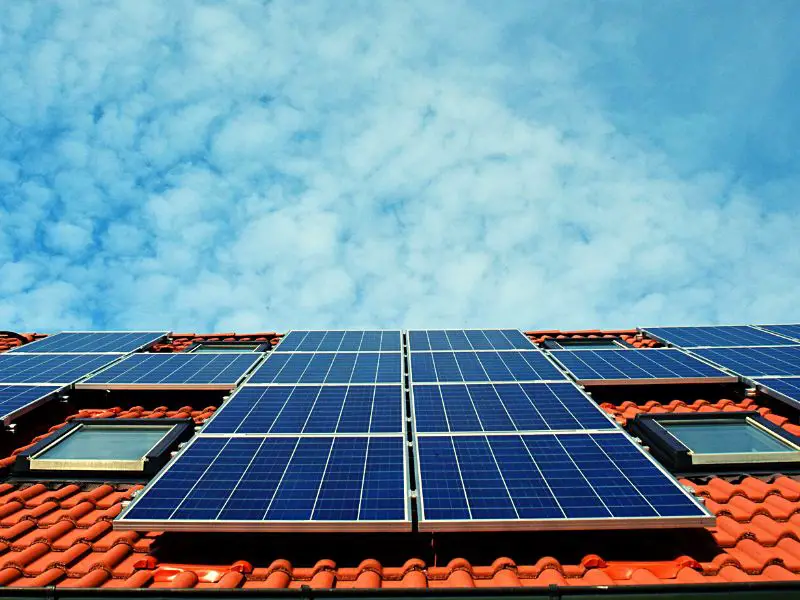
The Multifaceted Benefits of Green and Cool Roofs
With the increasing attention on sustainable building practices and energy efficiency, homeowners and commercial roofing contractors are actively seeking innovative solutions. Among the favored are cool roofs and green roofs. But when coupled with solar photovoltaic panels, an intriguing observation emerges: Solar Panels Cool Your Roof. This synergy offers both environmental and economic advantages.
Understanding Cool and Green Roofs
A cool roof is a roofing system designed to reflect more sunlight and absorb less heat compared to standard roofs. They usually employ cool roof coatings which enhance solar reflectance and thermal emittance. According to the Cool Roof Rating Council, such roofs can significantly decrease roof temperature, subsequently reducing the heat transferred into a building.
On the other hand, green roofs or living roofs are roofs covered with vegetation. Apart from adding urban green spaces, they show how Solar Panels Cool Your Roof when combined. They improve energy efficiency by adding natural insulation and reducing roof temperature.
Solar Photovoltaic Panels and Their Role
Solar panel installation on your roof doesn’t just harness the sun’s energy. Photovoltaic panels or PV panels, act as barriers between the sun’s rays and your roofing material. This results in roof shade and, subsequently, demonstrates that Solar Panels Cool Your Roof.
A solar system with tilted solar panels allows air to flow between the panel and the roof. This aerated gap, along with the panels themselves, amplifies the effect of how Solar Panels Cool Your Roof, helping to maintain a cooler roofing structure.
Roofing Types and Their Impact
Different roofing types can impact how efficiently Solar Panels Cool Your Roof. For instance, flat roofs are excellent candidates for green roofs given their structure, while pitched or sloped roofs might be better suited for solar installation.
The material of your roof, be it shingle, metal, or others, also influences its energy efficiency. Dark-colored shingle, for example, can absorb more heat energy than light-colored or those covered with cool roof coatings.
Economic Implications
Combining solar panels with other roofing technologies not only promotes the idea that Solar Panels Cool Your Roof but also brings economic benefits. Solar panels reduce dependency on grid electricity, leading to a decrease in energy costs. Add the cooling effects of cool roofs and green roofs, and the savings can amplify.
Less heat absorption from the roof means a cooler building interior. This translates to reduced air conditioning requirements and further savings on energy costs. Modern commercial roofing practices recognize this potential, with businesses increasingly combining green or cool roofs with photovoltaic panel installations.
Innovation in Modern Roofing: The Role of Bob
In the journey towards sustainable practices and energy-efficient solutions, it’s essential to consider real-life examples. Take Bob, a forward-thinker at 30. Recognizing the potential of how Solar Panels Cool Your Roof, he integrated cool roof practices with solar installation. Bob’s efforts led to reduced energy bills and set a benchmark for sustainable practices.
Why Do Roofs Get So Hot?
To understand how do solar panels cool your roof, you must first understand what causes roofs to heat up.
Roofs may get overheated for a variety of causes, including:
1. The Color of the Roof
The color of your roof can have a massive impact on the temperature of your house. Different colors reflect varying amounts of light, so darker colors absorb more heat and can cause your house to get hotter. Lighter colors reflect light better, meaning they help keep your home cool and avoid high temperatures.
While dark colors absorb heat, they can also look stylish, essential in many US homes. However, as darker colors absorb heat and light colors reflect it, it makes much sense to have a more lightweight colored roof and a darker-colored wall (to match). This way, your roof can reflect heat to keep your home cool and lower electricity bills.
2. The Roof’s Material
The roof of your house gets so hot because it is exposed to the sun all day. The roofing material of your home, whether shingles or tiles, can also contribute to the heat. While it may seem counterintuitive for roofing materials to heat your house, they can radiate heat from the sun to your home.
A roof can consist of several types of roofing materials. The most common material is shingles, which are made out of asphalt. Asphalt shingles are an efficient and durable material that lasts 15 to 30 years. However, asphalt shingles can cause hot air from your house to rise, causing a hot spot on the roof.
On the other hand, metal roofs behave more like mirrors, meaning they reflect light very well. Metal roofs may reflect up to 70% of the sun’s rays!
3. The Construction of the Roof
According to any professional in the roofing industry. Proper roof ventilation is the most effective way to keep your home cool throughout the summer.
If your house is well-built and your attic has sufficient insulation and ventilation, surplus heat will be able to escape, significantly reducing roof heat and keeping your home cool.
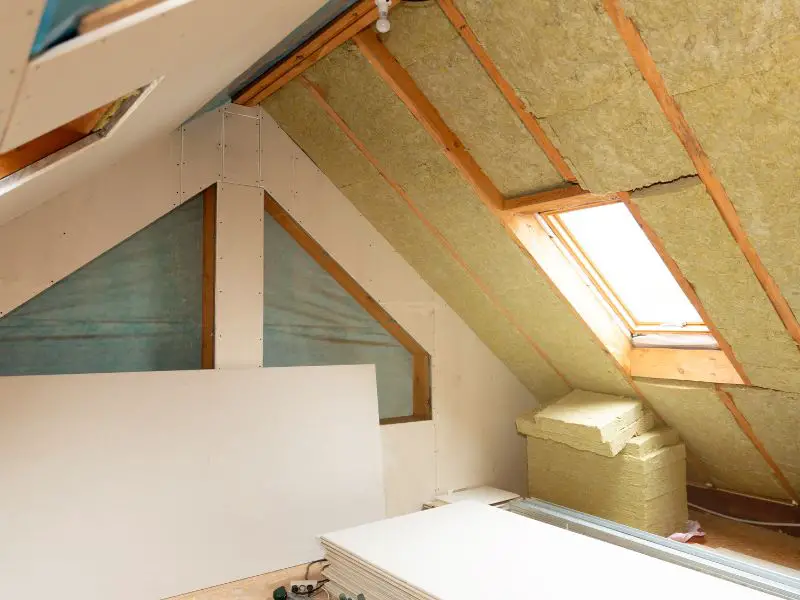
Why Do Solar Panels Keep Your Roof Cool?
You may not realize how much heat energy a dark surface may collect until you work on a roof. But, on a hot day in the summer, a roof can get as hot as 70 degrees Celsius.
While roofing materials are built to tolerate tremendous heat, high temperatures may cause wear and tear on the material. As a result of the roof’s heat radiating down into the house or building below, the temperature rises.
So, “Do solar panels on your roof cool the temperature inside your house?” In a nutshell, the answer is yes. But let’s take a further glance at how this happens.
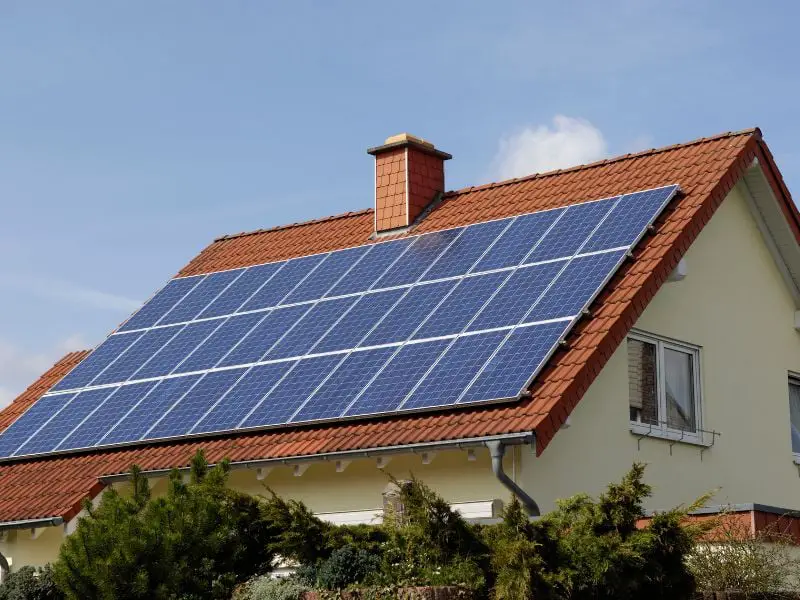
1. Energy Conversions
Solar panels convert sunlight into electricity. Solar panels for residential use typically have an efficiency of between 16% and 20%. This implies that 16% to 20% of the energy that strikes your solar panels is not reflected or transformed into heat but is absorbed by the panel and converted into DC, then transmitted through cables for energy consumption.
2. Reflectance
Your solar panels, just like any other surface, will reflect part of the sunlight that hits them. Solar cells, regardless of whether they are dark blue or black, will still reflect at least the amount of light directed at them.
In addition, solar panels are made of glass and have aluminum frames, which can reflect part of the energy directed at them.
3. Emittance
Like an asphalt roof heats in the sun, a solar panel can absorb some of the solar energy causing it to heat up.
Some solar panels are even entirely black for design purposes. But they may generate considerable heat, some radiating back to the sky. Unfortunately, some of this heat also radiates downward toward the roof, where it could heat the building.
4. Convection Through the Air Gap
A traditional residential solar panel system is installed on a roof-mounted racking system. This mounting mechanism suspends the solar panels a few inches above the roof surface.
This separation offers an opening through which air may flow. This airflow may transport heat away from the rear of the panels and the roof surface, lowering the heat received by your solar panels.
How Solar Panels Help Mitigate the Effects of Climate Change
Solar panels are already helping to reduce dependence on fossil fuels and greenhouse gas emissions, but in the future, they may also help mitigate the effects of climate change. While we may not yet be able to fully replace fossil fuels and other energy sources with solar power, solar panels provide an excellent alternative for homes, businesses, and farms that would like to reduce their energy consumption. Here are some ways how solar panels are helping mitigate the effects of climate change.
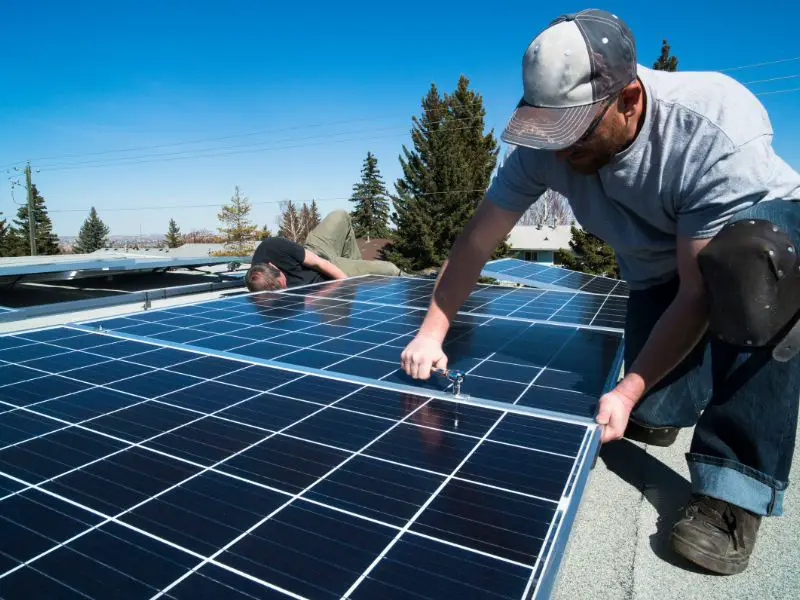
1. No C02 Emissions
Fortunately, solar panels do not generate any gases that might be hazardous to the environment. Therefore, the use of solar energy not only offers a clean, affordable, and dependable energy source. It also provides the chance to reduce our carbon footprints.
2. Preserve Natural Resources Such as Fossil Fuels
Installing solar panels can decrease your carbon footprint by using renewable energy sources. They harness energy from sunlight and store it in batteries. You can use these batteries to generate power for your home and electrical appliances. These panels are eco-friendly and help preserve natural resources such as fossil fuels.
3. Safe Energy Generation
The process of producing energy from fossil fuels is hazardous and damaging. In contrast to solar energy, it requires underground drilling and chemicals, steam, or gases for optimal output. On the other hand, solar power is safe and straightforward to create since all that is required is the installation of solar panels.
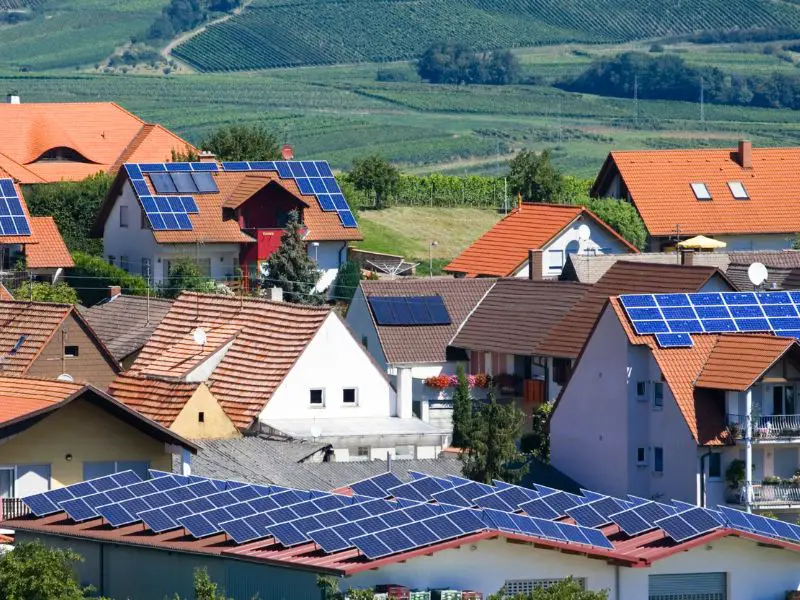
Find out more about solar energy: Is Solar Energy Renewable, Best Solar Panel, Is It Safe to Walk On Solar Panels
Frequently Asked Questions (FAQs)
These FAQs provide insights into how solar panels can affect the cooling of your roof and its potential benefits.
Bottom Line
Solar panels help reduce greenhouse gas emissions in the atmosphere by reducing our dependence on fossil fuels. The solar panels’ electricity can be fed back into the grid or stored in batteries for reserved energy use. The panels require little maintenance and will last much longer than their conventional counterparts. Solar power is also commonly associated with being environmentally friendly, which the modern-day consumer considers when making a purchase.
When it comes to the heat in your home, solar panels are the best chance you have to lower the temperature without relying solely on air conditioning. Solar panels work as they absorb the sun’s radiation and turn it into electrical energy that you can use for household purposes.
